An emoji story
This week’s task invited us to explore the perilous world of using the semiotic mode of the emoji to create a narrative text by recreating the plot of a TV show or movie. Below I have created an emoji plot summary of a TV show available on Netflix (in the U.S. and Canada!) The title, which is one word in reality and loosely imagined here, appears on the first line, and the following summary covers the first episode and goes a bit further into the first season.
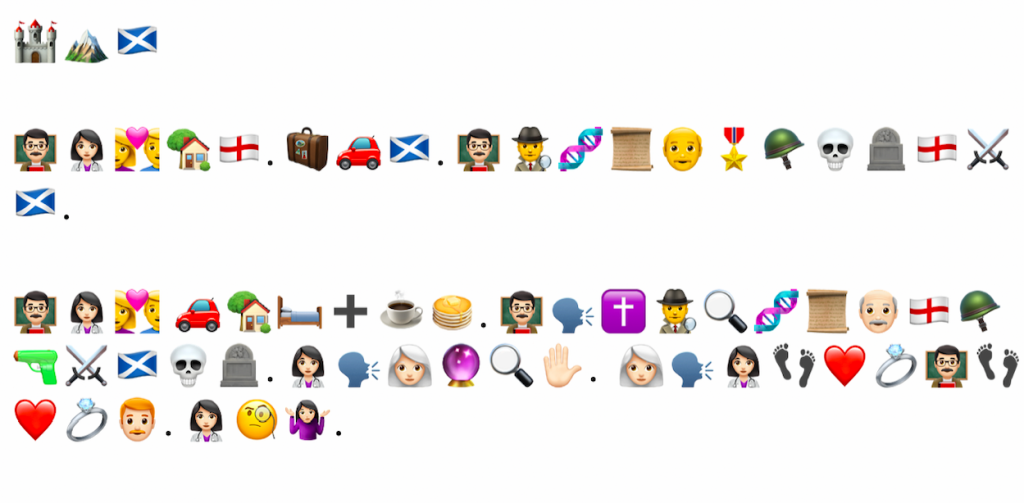
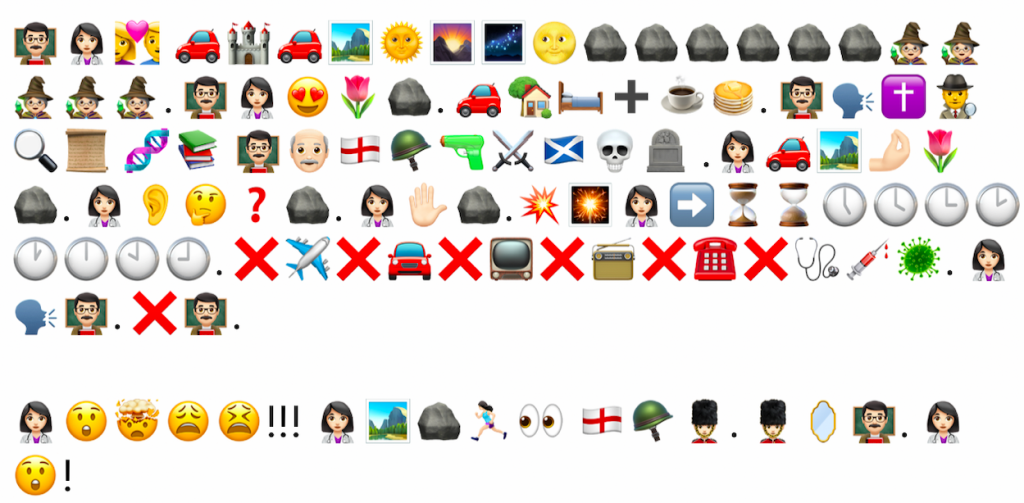
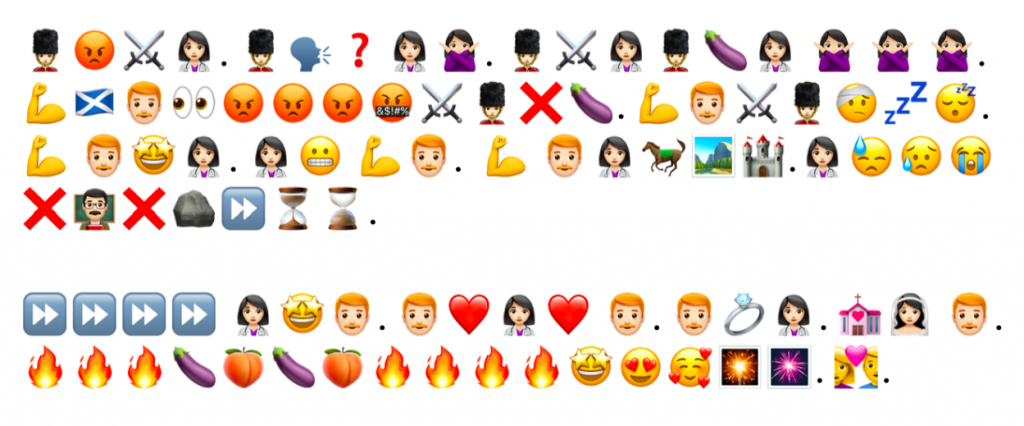
If you’re curious about what show this is, click here to watch the season 1 trailer.
An emoji is a pictogram, defined as “a graphic symbol that conveys its meaning through its pictorial resemblance to a physical object,” and though the emoji library continues to gradually expand to represent more words and ideas, it is still fairly limited (Wikipedia, 2021). In his discussion of the breakout of the visual in the late age of print, Bolter refers to the limitation of picture writing, a precursor to emoji as a mode of electronic picture writing, to convey a narrative (2010). In picture writing or depiction through images, as Kress (2005) describes, an author can draw what they like in order to communicate meaning, and the mode is superior to using words whose meanings can be vague. In picture writing, Bolter describes each element existing “between linguistic and pictorial meaning” and that “when the picture text is a narrative, the elements seem to aim for the specificity of language” (2010, p. 63). In my experience, emoji as pictograms function best when they are used to communicate a short message or basic idea quickly and efficiently (such as a thumbs up to represent an affirmative response such as “yes” or a heart to represent “I love you”) or when they supplement alphabetic texts rather than replace them completely. In this attempt to produce a more complex narrative, I found myself struggling to find emoji to communicate specifically what I wanted, even after taking time to scroll through the library and even search emojis by word, as shown below.
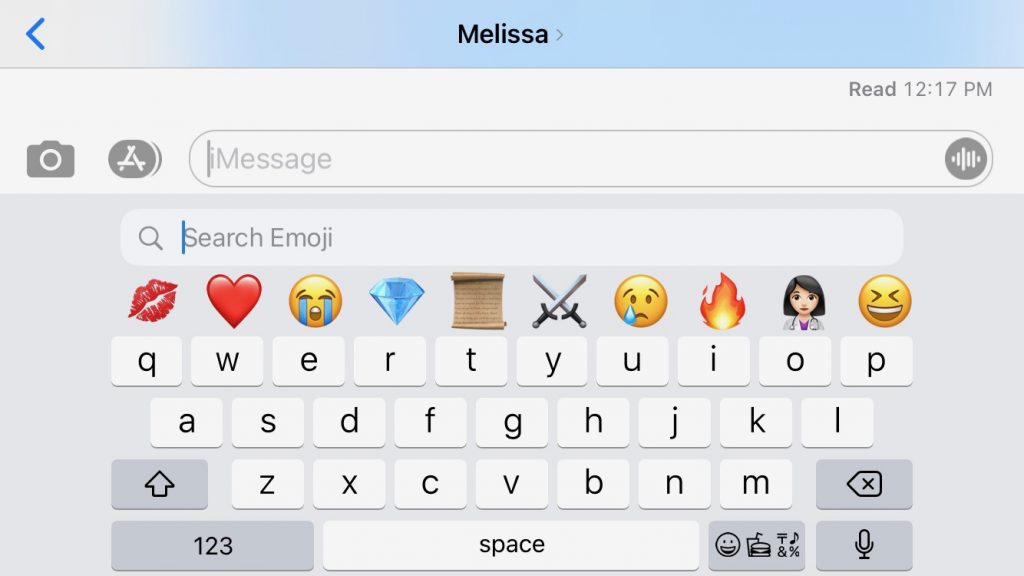
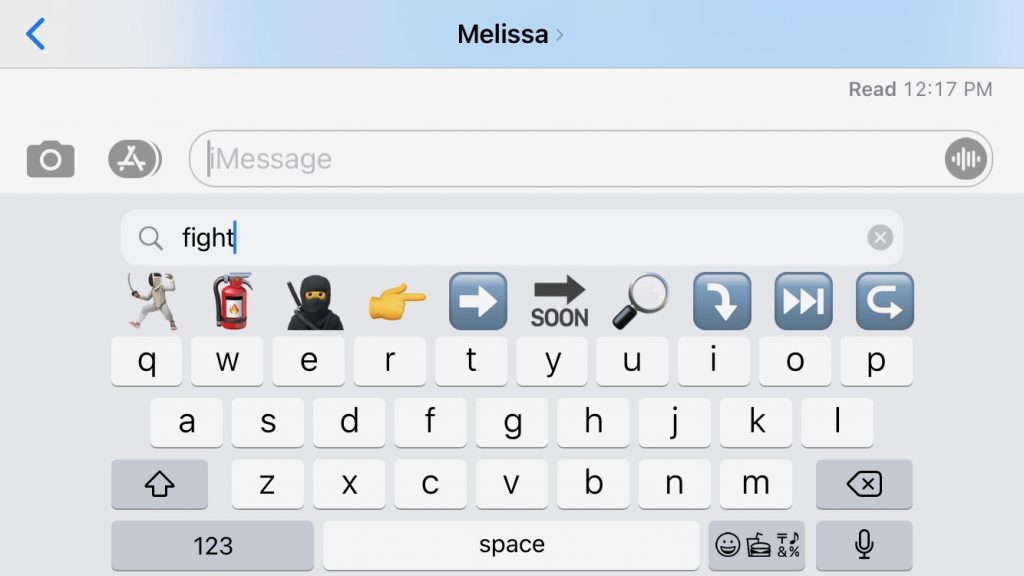
Prior to beginning this task, I was somewhat naive in thinking the emoji library would allow me great freedom in communicating my ideas effectively, and I ultimately found it very frustrating and limiting mode to use for an extended period of time. When I found myself struggling, I started adding more and more emojis in the attempt to be more descriptive or specific, and as a result, my sentences become a convoluted mess. Though my attempt to use emojis to create a clear, specific narrative was in earnest, the limitations of the mode may mean the reader will likely be confused and the meaning of my chosen emojis obfuscated.
I chose a TV show I’ve been binge watching, as it’s fresh on my mind, but I did not choose it for its ease in translating visually through the use of emoji. My mother recommended the show to me, has seen the show in its entirety, and she agreed to read my emoji plot summary to see if it was comprehensible. I sent her the plot summary in a text, and we FaceTimed so I could hear her read it aloud and see how she did.
In Zaltzman’s podcast interview with internet linguist McCulloch, they discuss emoji as a semiotic mode which relies heavily on the reader’s ability to interpret emoji meaningfully as influenced by a number of factors including the reader’s experience, cultural, and linguistic contexts (2019). My emoji plot summary takes a bit of a risqué turn when I begin using common vegetables and fruits, and my mom did not have the same cultural knowledge or experience necessary to interpret those symbols in the way I intended. As someone who has used formerly used dating apps, currently uses social media apps and text messages regularly, the eggplant and peach are used in some contexts to represent sexual connotations. As McCulloch says, “if you’re going to have emoji convey these additional meanings, those can’t be universal because somebody has to tell you that the eggplant is obscene and not just a vegetable.” Awkwardly, that’s what I had to do!
Though we have discussed the show several times in the past week, mom struggled to understand what the heck it all meant and make the leap to realize it’s the same show she knows I’ve been watching and we’ve been talking about. Even when I returned to the emoji plot summary later in the week, I had some difficulty interpreting what it all meant.
References
Bolter, J. D. (2010). Writing space: Computers, hypertext, and the remediation of print (2nd ed.). Lawrence Erlbaum Associates. doi:10.4324/9781410600110
Kress, G. (2005). Gains and losses: New forms of texts, knowledge, and learning. Computers and Composition, Vol. 2(1), 5-22. doi:10.1016/j.compcom.2004.12.004
Pictogram. (2021, February 21). In Wikipedia. https://en.wikipedia.org/wiki/Pictogram
Zaltzman, H. (Host). (2019, July 13). The Allusionist 102. New Rules [Audio podcast]. The Allusionist. https://www.theallusionist.org/allusionist/new-rules
3 replies on “Task 6”
Hi Mel!
I really enjoyed your emoji story–very creatively done! I was able to guess “Outlander”, but I must confess it was only based on the title emojis–the Scottish flag was a big hint. Also, I was able to follow the emoji plot mainly because I have read the book (Book 1 in the Outlander series). I have not watched the show but I am quite looking forward to it. 🙂
Thank you, Manize, and you’re spot on! The deeper I get into the show the more difficult it is to watch. Lots of violence and particularly sexual violence. How was the book?
Hi Mel,
Sorry for the late reply! The Outlander series has several books and novellas, but I have only read the first main book also titled “The Outlander”. The book has some violence too and some scenes are a bit too graphic for my taste. I decided to stop after reading the first part. 🙂
Cheers,
Manize